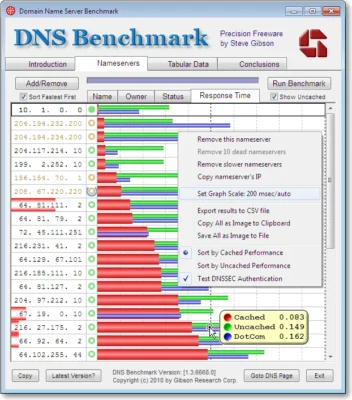der graslutscher noch einmal zur einschätzung der strompreisschwankungen letztens ...
#politik #ErneuerbareEnergien #blog
 Der Graslutscher wrote the following post Fri, 20 Dec 2024 15:02:02 +0100
Der Graslutscher wrote the following post Fri, 20 Dec 2024 15:02:02 +0100
Dunkelflauten-Adventskalender Türchen 2: Nein, der Strom war letzte Woche nicht viel teurer als mit Atomkraft
(das ist Türchen Nummer 2. Solltet Ihr es verpasst haben, findet ihr hier
Türchen Nummer 1) WAS, 90 Cent pro Kilowattstunde, seid ihr komplett
bescheuert oder was? So oder so ähnlich schallte es letzte Woche
mutmaßlich aus einer Menge Münder, als die Börsenstrompreise
Rekordhöhen erreichten. Wobei ich bezweifle, dass es die Strompreise
selbst waren, denn ...
Weiterlesen
Der Beitrag Dunkelflauten-Adventskalender Türchen 2: Nein, der Strom war
letzte Woche nicht viel teurer als mit Atomkraft erschien zuerst auf Der
Graslutscher.
https://graslutscher.de/dunkelflauten-adventskalender-tuerchen-nummer-2-nein-der-strom-war-letzte-woche-nicht-viel-teurer-als-mit-atomkraft/#more-6800View articleView summaryDunkelflauten-Adventskalender Türchen 2: Nein, der Strom war letzte Woche nicht viel teurer als mit Atomkraft
(das ist Türchen Nummer 2. Solltet Ihr es verpasst haben, findet ihr hier Türchen Nummer 1)
WAS, 90 Cent pro Kilowattstunde, seid ihr komplett bescheuert oder was? So oder so ähnlich schallte es letzte Woche mutmaßlich aus einer Menge Münder, als die Börsenstrompreise Rekordhöhen erreichten. Wobei ich bezweifle, dass es die Strompreise selbst waren, denn auf die meisten Menschen haben kurzzeitige Preisspitzen so wenig Auswirkung die schwankende Umlaufbahn eines der kleineren Jupitermonde. Was schon eher eine Auswirkung auf ihre Laune hat, sind die Schlagzeilen über Strompreise, und davon gab es reichlich:

„Wenn die Dunkelflaute die Strompreise treibt“ (SZ), „Warum die schwedische Energieministerin auf Deutschland schimpft“ (Spiegel), „Problem der „Dunkelflaute“: Strompreis kurzfristig auf neue Spitze gestiegen“ (Tagesschau), „Dunkelflaute: Darum ist Strom gerade so teuer“ (Zeit), „Dunkelflaute lässt Strompreise explodieren“ (ZDF), und das sind noch die besseren Überschriften.
Wer es knalliger und ganz schlicht will, scrollt wie zumeist beim focus vorbei, da darf eine Kolumnistin bar jeder Kenntnisse zum europäischen Stromhandel ihre persönliche Paranoia ausleben und war laut eigener Aussage „verzweifelt“. Meine Güte, dafür dass sich beim focus gerne über Befindlichkeiten anderer Leute lustig gemacht wird, ist man dort ganz schön wehleidig aufgestellt angesichts punktuell hoher Strompreise.
Ja, punktuell. Was ich in den meisten Artikeln bzw. in den Kommentarspalten darunter vermisst habe, war eine Einordnung, wie oft derartige Preise erreicht werden. Die 940 Euro/MWh oder 94 Cent/Kilowattstunde waren für Energieprofis irritierend, weil unsere installierte Leistung solche Preise eigentlich verhindern sollte. Eine private Verbraucherin mit normalem Stromtarif bekam von den Verwerfungen an der Börse aber ohnehin nichts mit, sie konnte sich mit ihrem festen Tarif auch am 12.12.2024 um 18 Uhr für 30 Cent pro Kilowattstunde Teewasser aufkochen.
Bei Menschen mit flexiblem Stromtarif sah das mit 94 Cent/kWh in der Tat anders aus, aber 3 Stunden später lag der Preis auch für sie schon wieder bei moderaten 17 Cent/Kilowattstunde. Ja, es gibt schönere Dinge in der Vorweihnachtszeit, aber das alles war nichts gegen die Verwerfungen vor ziemlich genau 2 Jahren. Da stiegen die Börsenstrompreise auf nicht ganz so hohe 66 Cent pro Kilowattstunde, aber sie blieben die ganze Werkwoche sehr hoch.
Komisch, da kam wenig Kritik und Verzweiflung und auch die schwedische Energieministerin, die laut vieler Medien aktuell wegen der Strompreise sauer auf Deutschland ist, verhielt sich auffällig still. Das könnte eventuell daran liegen, dass die Ursache vor 2 Jahren nicht nur eine Dunkelflaute war, sondern dass die Kernkraft in Frankreich große Probleme hatte und zur Zeit hoher Preise 8 Gigawatt bzw. 10 Prozent seines Tagesverbrauchs aus dem Rest Europas importierte. Reaktion der deutschen Medien: Stille, Grillenzirpen, eine Wüstenhexe wedelte vorbei.

Auch von Ebba Busch wurde dazu, die auch zu diesem Zeitpunkt schon schwedische Energieministerin war, wenig getweetet (hauptsächlich Weihnachtsgrüße). Da sie eine Verfechterin neuer Atomkraftwerke in Schweden ist, könnte man zu dem Schluss kommen, dass die Ursache der hohen Preise im Winter 2022 einfach nicht gut zu ihrer politischen Agenda passten, um sie zu thematisieren, denn da hatte Deutschland noch aktive Atomkraftwerke. Die Situation 2 Jahre später aber schon. Zu dieser Haltung kann man nun stehen, wie man will, aber dass sie nicht gerade als objektive Stimme in der Frage europäischer Stromerzeugung in Frage kommt, sollte doch irgendwie klar sein. Nicht wahr, liebe deutsche Medien?
Gut, aber wieso waren die Preise jetzt überhaupt (übrigens in halb Europa) so hoch? Weil Wind und Sonne gefehlt haben, sagen die einen. Ja schon auch, aber für solche Tage haben wir ja eigentlich 100 Gigawatt wetterunabhängige Kraftwerke, die auch ganz allein den Bedarf decken können. Der Verdacht der vieler Fachleute war, dass von diesen weniger liefen als für diese Tage vorgesehen ist und dass die Versorgung dennoch sicher war.
Auch ich verstieg mich letzte Woche zu der Aussage, dass die Kraftwerksbetreiber an dem Tag offenbar weniger Strom erzeugten als sie eigentlich laut Kraftwerksliste könnten, andere sprachen unverblümt von Marktmanipulation (ein bislang unbelegter, in meinen Augen recht gewagter Vorwurf). Tatsächlich kann man in Portalen wie Energy-Charts sehen, dass die fossile Stromerzeugung im Vergleich zum gleichen Tag im Jahr 2022 trotz ähnlicher Witterung scheinbar deutlich niedriger lag. Nur 19 von verfügbaren 36 Gigawatt Erdgas bevölkerte laut diesen Daten das Netz und so haben wir uns natürlich gefragt, was da los ist.
Wieso sollte der Betreiber eines Gaskraftwerks das nicht hochfahren wenn er 900 Euro für eine Megawattstunde bekommt? Mein Tipp an euch: Wird der Strom so richtig teuer und ihr besitzt ein 100-MW-Gaskraftwerk, dann werft es an und werdet stinkreich damit. Allein in der Stunde von 17 bis 18 Uhr am 12.12.2024 hättet ihr damit knapp 100.000 € Umsatz gemacht. Sollte der hier mitlesende Pöbel hingegen kein Gaskraftwerk besitzen (schämt euch): Das Gas hierfür kostet aktuell etwa 8.000 €, die Nummer ist zu solchen Zeiten also eine Lizenz zum Geld drucken.
Was ich nicht wusste: Die Daten sind nur eine Näherung, weil sehr viele dieser Kraftwerke gar nicht in Echtzeit berichten, wie viel sie erzeugt haben. Sollte Euer Gaskraftwerk nämlich nur 99 Megawatt schaffen, seid ihr von der viertelstündlichen Berichtspflicht befreit und müsst nur am Ende des Monats einmal sagen, wie viel ihr produziert habt. Wie viel am 12.12.2024 um 18 Uhr von euch kam, wissen wir nicht. Die Daten in den Portalen sind daher auch nur Schätzungen.
An diesem Tag hat aber tatsächlich einiges in unseren Kohlekraftwerken geknirscht, so dass es bei den Großkraftwerken gleich mehrere Komplett-Ausfälle gab. Der Bundesverband Erneuerbare Energie geht insgesamt von etwa 10 Gigawatt Gaskraft fehlten und 7 Gigawatt Kohlekraft – was sich ganz gut mit unseren Importen an diesem Tag deckt.
Aber wenn das der Grund war, ist es dann fair, den Erneuerbaren die Schuld zu geben? Ja, die haben keinen Strom geliefert. Logisch, war ja auch windstill. Aber angenommen, ihr sollt auf eine Herde Wombats aufpassen (diese possierlichen Kreaturen aus Australien), meldet euch dann krank und eure Vertretung kommt einfach nicht, weil auch krank – wer hat dann den Wombat-Ausbruch zu verantworten? Ihr? Eure Vertretung? Oder die Person, die diesen löchrigen Schichtplan aufgestellt hat?
Dieses Fingerpointing hilft uns aber ohnehin nicht weiter, denn die zu Grunde liegende Situation mit schwankender Stromerzeugung aus Wind und Solar wird in Zukunft noch zunehmen. Wer wissen will, was daran wirklich ein Problem ist und was nicht, dem/der sei das wohltuend sachliche Interview mit Energieökonom Lion Hirth und der Chefin des Branchenverbandes BDEW in der FAZ empfohlen. Schwankende Preise sind hiernach prinzipiell nichts Ungewöhnliches und auch kein überraschendes Marktergebnis, außerdem sind sie wichtige Anreize für Speicher und flexible Nachfrage.
Hört also bitte den Expertinnen in dieser Sache zu, die die Preise wie letzte Woche durchaus thematisieren, aber eben damit wir unsere Systeme ändern, nicht um Panik zu verbreiten oder die Atomdebatte zum zwanzigsten mal aufzuwärmen.
Es gibt ja tatsächlich ein paar Designfehler, die das Problem künstlich größer machen, als es ist. Deutschland liegt fatal weit hinten beim Ausrollen von Smart Metern für flexible Stromtarife, hat gerade technische Probleme bei der Kohlekraft, zu wenig Speicher und keine Strompreiszonen. Noch etwas irrer:
Laut Lion Hirt (erklärt er im gleichen FAZ-Artikel) bekommen energieintensive Unternehmen mit hohem Verbrauch 80% Rabatt auf die Netzentgelte, aber nur wenn sie sich verpflichten, kontinuierlich Strom abzunehmen. Auch bei europaweiter Knappheit mit Rekordpreisen. Auch am letzten Donnerstag um 18 Uhr. Aaaah!
Stellt euch das vor, ihr betreibt eine fette Aluminiumschmelze und seht, dass der Strom gegen Abend schmerzhaft teuer werden wird (die Prognosen liegen lange vorher vor). Eine kluge Betriebsleiterin würde dann den Verbrauch für 4 Stunden drosseln, dabei Geld sparen UND den Preis damit für alle anderen ebenfalls senken. Dieses Verhalten würde aber aktuell bestraft werden mit Entzug des Rabatts von 80%.
Hier könnt ihr ganz gut sehen, wer es in dieser Debatte ehrlich meint und wer nur Stimmungsmache betreibt. Die Preise thematisieren, um endlich die lange diskutierten Lösungen dafür umzusetzen, ist vollkommen legitim. Sich mit verschränkten Armen hinstellen und die Preise als Anlass dafür nehmen, keine Erneuerbaren mehr zu wollen, ist hingegen unglaubwürdig.
Und eine Sache haben die Preise ja bereits geschafft: Ein Batterietsunami von 160 Gigawatt Leistung rollt auf uns zu (yeah). Selbst wenn davon bis 2026 nur die Hälfte gebaut würde, wäre das deutlich mehr als das Energieministerium für das Jahr 2045 geplant hat. Damit überbrücken wir zwar keine mehrere Tage andauernde Dunkelflaute, aber ein paar Stunden Stromspitzen bekommen wir damit sehr gut in den Griff.
Was uns zu Türchen 3 führt: Wie viel Speicherstrom brauchen wir denn eigentlich für eine ordentliche Dunkelflaute?
_____________________________________________________

Hat Dir dieser Text gefallen? Schön. Er wäre nicht zu Stande gekommen, wenn mich nicht viele großzügige Menschen unterstützen würden.
Damit der hiesige Blogger sein Leben dem Schreiben revolutionärer Texte widmen kann ohne zu verhungern oder diesen Blog mit ekligen Werbebannern zu verunstalten, kannst auch Du ihm hier ein paar Euro Unterstützung zukommen lassen.
Der Beitrag Dunkelflauten-Adventskalender Türchen 2: Nein, der Strom war letzte Woche nicht viel teurer als mit Atomkraft erschien zuerst auf Der Graslutscher.






















 . But even if you use Arch Linux, they may also state you should not be using it as a new user… That said, forums are all getting a lot more friendly and helpful today, and there are also lots of Arch Linux users from all experience levels. This is really not such an issue today as it was maybe 5 plus years ago. I’m just mentioning it as those stereotypes do still crop up, but there are really tons of assistance and posts online about solving all sorts of Arch Linux issues. I know, because I use them to solve any issues I encounter on Manjaro Linux too.
. But even if you use Arch Linux, they may also state you should not be using it as a new user… That said, forums are all getting a lot more friendly and helpful today, and there are also lots of Arch Linux users from all experience levels. This is really not such an issue today as it was maybe 5 plus years ago. I’m just mentioning it as those stereotypes do still crop up, but there are really tons of assistance and posts online about solving all sorts of Arch Linux issues. I know, because I use them to solve any issues I encounter on Manjaro Linux too.




